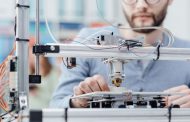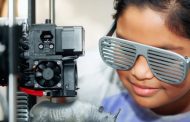One of the most exciting prospects of 3D printing technology is the ability to replicate—and thus preserve—ancient and historic artifacts, enabling us to keep a fragile or rare piece of history alive. Still, many of these valuable relics are oftentimes coated in rich colors and tones, and while the 3D printing industry has exceeded expectations in many ways, full-color printing capabilities have been a difficult hurdle to overcome. That’s where the multi-color, multi-material Stratasys J750 3D printer comes into play. After being unveiled earlier this year at the Fort Collins, Colorado-based OtterBox headquarters, their color-capable 3D printing system has been a used for a handful of unique projects.
From 3D printed neurosurgery training simulators to intricately colored artwork, the Stratasys J750 has proven itself to be a versatile and efficient system, and has certainly played a major role in helping Stratasys exceed their financial expectations during the 2016 second quarter. Recently, the multi-color 3D printer was used to preserve the magnificent glass created over a century ago by the renowned father and son glassblowing duo Leopold and Rudolf Blaschka, both of whom were known for their realistic recreations of plant and marine life.
Although there are thousands of original Blaschkas still intact, they are now housed and on display in select museums, making them inaccessible to many. Luckily, one museum curator, a marine biologist and Cornell professor named Drew Harvell, decided that he wanted to share these world-class glass sculptures with the world. One of Professor Harvell’s colleagues on the project, Peter Fried, made the connection with Stratasys reseller CADD Edge, who suggested that they utilize the color capability of the J750.
The first test print from the collection, which took place in the CADD Edge 3D printing facility in Connecticut, was Blaschka model B-560, a 130-year-old glass squid sculpture that measures out to just two inches.
According to Stratasys, very little adjustment was needed for the workflow between the scanning and 3D printing process, while the full-color print was produced without any post-processing techniques aside from support materials. Although they did not yet attempt to replicate the transparent qualities of the original squid sculpture, the J750 did manage to print a vivid and detailed copy.





